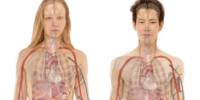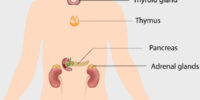Top Neurological Disorders And Treatments

Neurological disorders are a group of conditions that affect the brain, spinal cord, and nerves. These disorders can have a profound impact on an individual’s quality of life, leading to physical, cognitive, and emotional impairments.
Some of the most common neurological disorders include:
- Alzheimer’s disease
- Parkinson’s disease
- Multiple sclerosis
- Epilepsy
- Migraines
- Neuropathic pain
- Traumatic brain injury
- Spinal cord injury
While each of these disorders has its unique set of symptoms and treatment requirements, they all share a common thread of affecting the central nervous system. Due to the complex nature of the brain, treating neurological disorders can be challenging, requiring a multidisciplinary approach that includes medical, surgical, and rehabilitative interventions.
This article aims to provide an overview of the top neurological disorders and their respective treatment options, highlighting the latest research and clinical practices in the field.
Key Takeaways
- Neurological disorders affect the brain, spinal cord, and nerves and require multidisciplinary treatment.
- Alzheimer’s disease is a progressive neurodegenerative disorder characterized by cognitive decline and memory loss, with treatment options including cholinesterase inhibitors, memantine, cognitive stimulation, physical exercise, and social engagement.
- Parkinson’s disease is a progressive neurodegenerative disorder characterized by loss of dopamine-producing neurons in the brain, with management options including dopamine replacement therapy, physical therapy, occupational therapy, speech therapy, exercise, and a healthy diet.
- Treatment for neurological disorders such as multiple sclerosis, epilepsy, migraines, neuropathic pain, traumatic brain injury, and spinal cord injury may include medications, physical therapy, lifestyle modifications, and rehabilitation, with the goal of managing symptoms, slowing progression, and improving quality of life.
Alzheimer’s Disease and Treatment Options
Alzheimer’s disease, a progressive neurodegenerative disorder characterized by cognitive decline and memory loss, has various treatment options available that aim to alleviate symptoms and slow down disease progression. There is no known cure for Alzheimer’s disease, but different medications and therapies can help improve the cognitive and behavioral symptoms associated with it.
One of the most common treatment approaches for Alzheimer’s disease is the use of cholinesterase inhibitors, such as donepezil, rivastigmine, and galantamine, which work by increasing the levels of acetylcholine, a neurotransmitter that is depleted in Alzheimer’s disease.
Another treatment option for Alzheimer’s disease is memantine, a medication that works by regulating the activity of glutamate, another neurotransmitter that is involved in learning and memory. Memantine is often used in combination with cholinesterase inhibitors to enhance their effects.
Additionally, non-pharmacological interventions, such as cognitive stimulation, physical exercise, and social engagement, have been shown to improve cognitive function and quality of life in individuals with Alzheimer’s disease. While these treatments cannot reverse the damage caused by Alzheimer’s disease, they can help manage symptoms and improve overall functioning.
Parkinson’s Disease and Management Strategies
Parkinson’s Disease is a progressive neurodegenerative disorder that is characterized by the loss of dopamine-producing neurons in the substantia nigra region of the brain. This leads to a wide range of motor symptoms such as tremors, stiffness, and bradykinesia. Additionally, patients may also experience non-motor symptoms such as depression, anxiety, and cognitive decline.
Although there is no known cure for Parkinson’s Disease, there are several management strategies that can help alleviate the symptoms and improve the quality of life for patients.
To manage Parkinson’s Disease, patients may undergo a combination of pharmacological and non-pharmacological interventions. Some of the pharmacological approaches include dopamine replacement therapy, which involves the administration of levodopa, a precursor to dopamine. Other medications such as dopamine agonists, COMT inhibitors, and MAO-B inhibitors may also be used to manage symptoms.
Non-pharmacological interventions may include physical therapy, occupational therapy, and speech therapy. Additionally, lifestyle modifications such as regular exercise and a healthy diet can also play a role in managing Parkinson’s Disease.
Overall, the management of Parkinson’s Disease is a complex and ongoing process that requires a multidisciplinary approach to address both motor and non-motor symptoms that can significantly impact a patient’s quality of life.
Multiple Sclerosis: Symptoms and Treatment
Multiple Sclerosis is a chronic autoimmune disease that affects the central nervous system and can cause a wide range of symptoms. It is characterized by the destruction of myelin, the protective layer that surrounds nerve fibers, leading to the disruption of nerve signals between the brain and the rest of the body. The symptoms of Multiple Sclerosis vary widely and depend on the location and extent of the damage. Some of the most common symptoms include fatigue, muscle weakness, spasticity, balance problems, bladder and bowel dysfunction, vision problems, and cognitive impairment.
There are various treatments available for Multiple Sclerosis, including medications, physical therapy, and lifestyle modifications. The goal of treatment is to manage symptoms, slow the progression of the disease, and improve quality of life. The table below provides an overview of some of the most commonly used medications for the treatment of Multiple Sclerosis, their mechanism of action, and their potential side effects. It is important to note that treatment options may vary depending on the type and severity of the disease, as well as individual patient factors. A thorough evaluation by a healthcare provider is necessary to determine the most appropriate treatment plan.
| Medication Name | Mechanism of Action | Potential Side Effects | ||
|---|---|---|---|---|
| Interferon beta | Reduces inflammation and slows down the immune response | Flu-like symptoms, injection-site reactions, depression | ||
| Glatiramer acetate | Modulates the immune system and protects nerve fibers | Injection-site reactions, flushing, chest tightness | ||
| Dimethyl fumarate | Reduces inflammation and protects nerve fibers | Flushing, abdominal pain, diarrhea | ||
| Fingolimod | Modulates the immune system and prevents immune cells from entering the brain and spinal cord | Bradycardia, macular edema, liver function abnormalities | It may also cause respiratory infections and headaches. |
Epilepsy and Seizure Control
Epilepsy is a neurological condition characterized by recurrent seizures, and effective seizure control is crucial for managing the condition. Seizures can vary in intensity and duration, and they can affect a person’s physical, cognitive, and emotional functioning. While epilepsy can affect individuals of any age, it is more commonly diagnosed in children and older adults.
There are several approaches to treating epilepsy and managing seizures. Some of these include:
- Medications: Antiepileptic medications are typically the first line of treatment for epilepsy. These medications work by reducing the frequency and severity of seizures. However, they may cause side effects such as dizziness, fatigue, and weight gain.
- Surgery: In some cases, surgery may be recommended to remove the part of the brain where seizures originate. This procedure is typically reserved for individuals who have not responded well to medication.
- Vagus nerve stimulation: This treatment involves implanting a device in the chest that sends electrical signals to the brain through the vagus nerve. This can help reduce the frequency and intensity of seizures.
- Ketogenic diet: This high-fat, low-carbohydrate diet has been shown to reduce seizures in some individuals with epilepsy.
- Lifestyle modifications: Stress management, regular exercise, and adequate sleep can help reduce the frequency of seizures in some individuals with epilepsy.
Migraines: Causes and Therapies
Migraines are a debilitating neurological condition characterized by severe headaches, and understanding the underlying causes and effective therapies is crucial for managing the condition.
Migraines are often associated with a number of symptoms such as nausea, vomiting, and sensitivity to light and sound.
The exact cause of migraines is not fully understood, but it is believed to involve a complex interplay between genetic, environmental, and lifestyle factors.
Some of the triggers that can cause migraines include stress, certain foods, hormonal changes, and changes in sleep patterns.
There are several therapies available for managing migraines, including both non-pharmacological and pharmacological options.
Non-pharmacological therapies include relaxation techniques, cognitive behavioral therapy, and acupuncture.
Pharmacological therapies include over-the-counter pain relievers such as aspirin and ibuprofen, as well as prescription medications such as triptans and ergotamines.
In addition, preventive medications can be used to reduce the frequency and severity of migraines.
It is important for individuals with migraines to work closely with their healthcare provider to develop an individualized treatment plan that addresses their specific needs and symptoms.
Neuropathic Pain and Relief Methods
Neuropathic pain is a complex condition characterized by chronic pain that often results from nerve damage or dysfunction. This type of pain can be debilitating and affect a person’s quality of life. There are various causes of neuropathic pain, including nerve damage from injury or disease, such as diabetes or multiple sclerosis. It can also be a side effect of certain medications or treatments, such as chemotherapy.
While there is no cure for neuropathic pain, there are several methods for relief. Here are five ways to manage neuropathic pain:
- Medications: There are several medications that can be used to manage neuropathic pain, including antidepressants, anticonvulsants, and opioids.
- Therapy: Physical therapy can help improve mobility and reduce pain, while cognitive-behavioral therapy can help patients manage the emotional impact of chronic pain.
- Transcutaneous Electrical Nerve Stimulation (TENS): This therapy involves applying electrical stimulation to the nerves to reduce pain.
- Acupuncture: This traditional Chinese medicine practice involves the insertion of thin needles into specific points on the body to alleviate pain.
- Lifestyle changes: Eating a healthy diet, getting regular exercise, and reducing stress can all help reduce neuropathic pain. Additionally, quitting smoking and limiting alcohol consumption can also have a positive impact.
Traumatic Brain Injury: Rehabilitation and Recovery
Traumatic brain injury (TBI) rehabilitation and recovery involve a multifaceted approach that focuses on restoring cognitive, physical, and emotional functioning to pre-injury levels. The rehabilitation process can vary depending on the severity of the injury and can involve different healthcare professionals, including physical therapists, occupational therapists, speech-language pathologists, and neuropsychologists.
The goal of the rehabilitation team is to help the patient regain independence and improve their quality of life. The rehabilitation process usually begins with an assessment of the patient’s physical and cognitive abilities to determine the extent of the injury and establish a baseline for treatment.
The treatment plan is then tailored to the patient’s specific needs and can include a combination of physical therapy, occupational therapy, speech therapy, and cognitive rehabilitation. In addition to therapy, medications may be prescribed to manage pain, reduce inflammation, or address other symptoms.
The recovery process can be lengthy and may require ongoing support and therapy. However, with the right treatment and support, many patients can make significant progress in their recovery and improve their overall functioning.
Spinal Cord Injury: Rehabilitation and Adaptation
Rehabilitation and adaptation are crucial components in the management of spinal cord injuries, aimed at improving functional abilities and enhancing quality of life. The rehabilitation process is typically divided into three phases: acute, sub-acute, and chronic. The acute phase, which takes place immediately after the injury, focuses on stabilization and preventing further damage to the spinal cord. Once the patient is stable, they move into the sub-acute phase, where they receive intensive therapy aimed at improving their function. The chronic phase involves ongoing care and maintenance to prevent complications and optimize function over the long term.
Adaptation, on the other hand, involves modifying the environment and developing new skills to compensate for the loss of function caused by the injury. This can include training in wheelchair mobility, using assistive devices, and modifying the home or workplace to accommodate the patient’s needs. The goal of adaptation is to help the patient achieve maximum independence and participate fully in their daily activities. It is important to note that rehabilitation and adaptation are ongoing processes that require ongoing support and resources to be successful.
| Positive Emotions | Negative Emotions |
|---|---|
| Joy | Sadness |
| Gratitude | Fear |
| Hope | Anger |
| Inspiration | Frustration |
Conclusion
In conclusion, neurological disorders can have a significant impact on a person’s quality of life, and effective management strategies are crucial for those affected.
Alzheimer’s disease and Parkinson’s disease are both degenerative conditions that require ongoing care and treatment.
Multiple sclerosis and epilepsy can also greatly affect a person’s daily functioning, but with proper medical intervention, symptoms can be managed.
Migraines, neuropathic pain, traumatic brain injury, and spinal cord injury all require specialized care and rehabilitation to promote recovery and adaptation.
As research in neuroscience continues to advance, there is hope for improved treatments and ultimately, a cure for these conditions. However, in the meantime, it is essential for medical professionals to provide comprehensive care that addresses both physical and psychological aspects of these disorders.
Additionally, it is important for society to raise awareness and increase support for those living with neurological conditions, so that they can lead fulfilling and meaningful lives.








